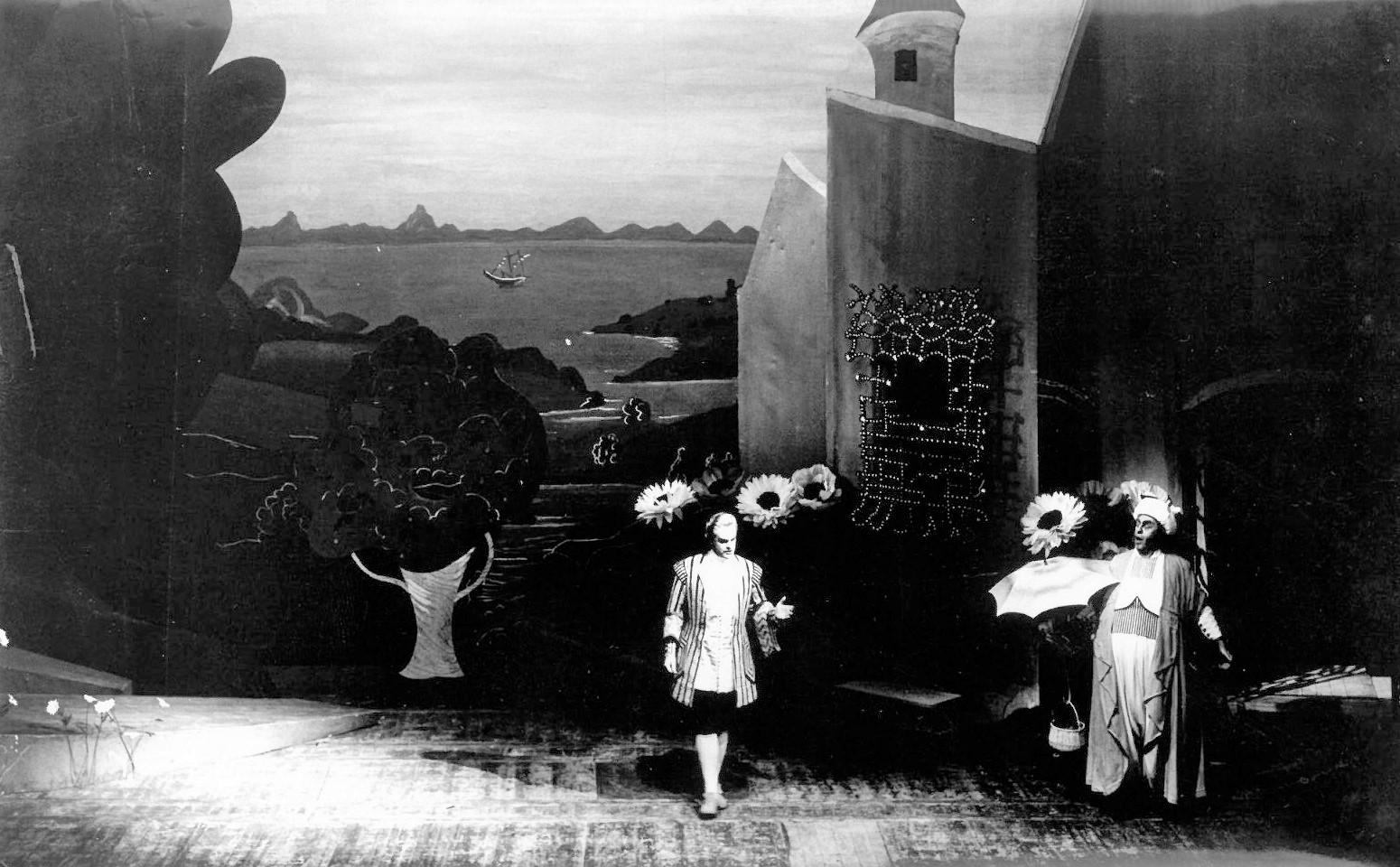[ 75 YEARS IN PICTURES ] A FESTIVAL OF PAINTER-DECORATORS
Share
The true reason behind the significance and success of Aix was the fusion of opera and painting.
Gabriel Dussurget, First General Director of the Festival d’Aix-en-Provence
— In 1951, André Derain designed the costumes and sets for Jean Le Poulain’s production of Mozart’s The Abduction from the Seraglio. This prominent figure of Fauvism succeeded Georges Wakhévitch, Cassandre, and Balthus, who were responsible for the sets and costumes of, respectively: the first Così fan tutte in 1948, Don Giovanni in 1949 and Così fan tutte in 1950. Derain, who was influenced by the revolutionary aesthetics proposed by the Ballets russes, for which he created his first sets, remained dedicated to set design throughout his career, as demonstrated by this photograph taken during the revival of the production in 1967.

The Abduction from the Seraglio by Mozart, Festival d’Aix-en-Provence 1967
© Jean Bouville, Ville d’Aix-en-Provence
– Painter, poster artist, and set designer Jean-Denis Malclès designed the sets and costumes for Jean Meyer’s production of Gluck’s Orpheus and Eurydice, presented in 1955. That same year, festivalgoers also discovered the sets by Catalan artist Antoni Clavé for The Marriage of Figaro.

Orpheus and Eurydice by Gluck, Festival d’Aix-en-Provence 1955 © Henry Ely-Aix
— Between 1960 and 1963, Suzanne Lalique, a painter-illustrator, stage designer, and costume designer, created the costumes and sets for four productions: Purcell’s Dido and Aeneas (1960), L’incoronazione di Poppea (1961), Il combattimento di Tancredi e Clorinda with stage director Jeanine Charrat (1961), and Idomeneo (1963).
This photo shows L’incoronazione di Poppea, for which she designed an ancient palace in trompe-l’œil and dressed all singers in togas to recreate imperial Rome.

L’incoronazione di Poppea, Festival d’Aix-en-Provence 1961
© Jean Bouville, Ville d’Aix-en-Provence
Profoundly influenced by the aesthetic impact of performances by the Ballets russes in early twentieth-century Paris, Gabriel Dussurget drew inspiration from their modernity and interdisciplinarity to shape the artistic identity of the Festival d’Aix, which he founded in 1948.
For a deeper understanding of the history of modern stagecraft at the Festival d’Aix, read this article about the Ballets russes.